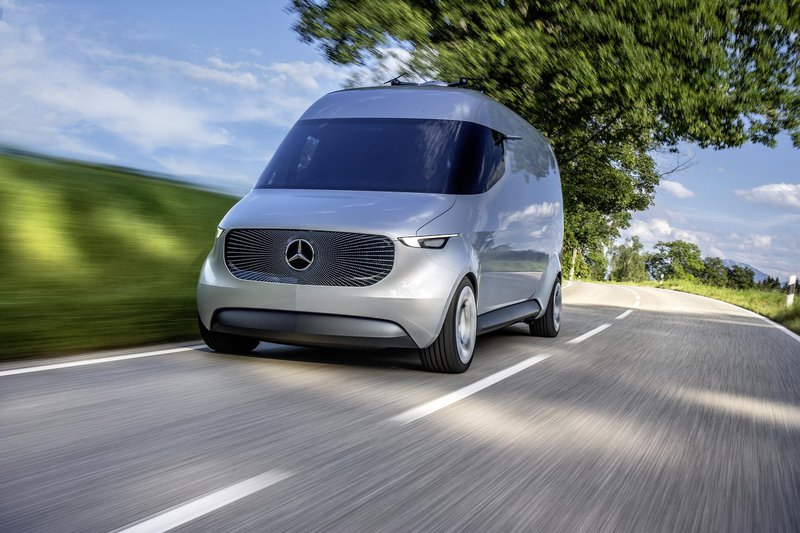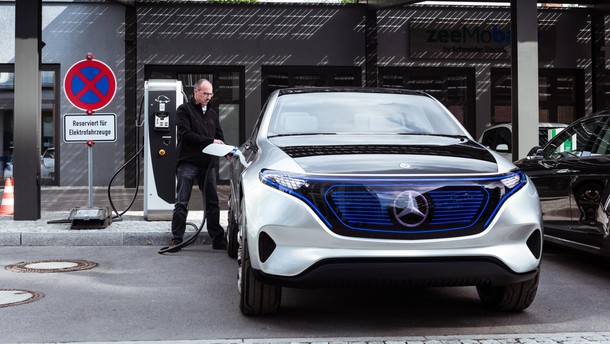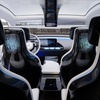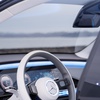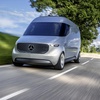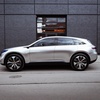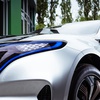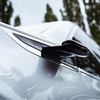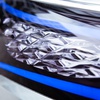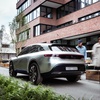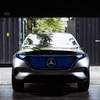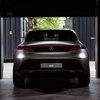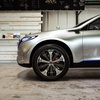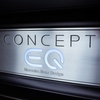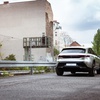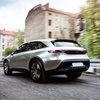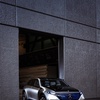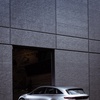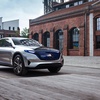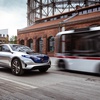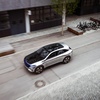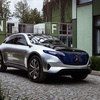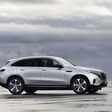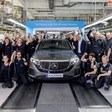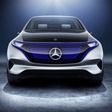
The Mercedes EQC will mark the start of a new era for Mercedes-Benz when it reaches the star brand´s dealers in 2019, less than three years after the world premiere of the concept that announced the new EV range at the Paris auto show in late 2016
The road to lay the foundations of the Mercedes EQ sub-brand promises to be somewhat smoother than it was for BMW to settle the "I" range mainly because in just a handful of years the world, the industry and the customers – maybe except for Donald Trump – grew accustomed to the idea that in mankind´s future mobility will be electric, sooner or later.
In a world widely accepted vehicle shape
Another important factor which will make it easier for the first EQ to enter the common consumer households is the fact that is has the shape of an SUV, a world widely accepted vehicle shape whereas the i3 body is much more limited in terms of consumer reach.
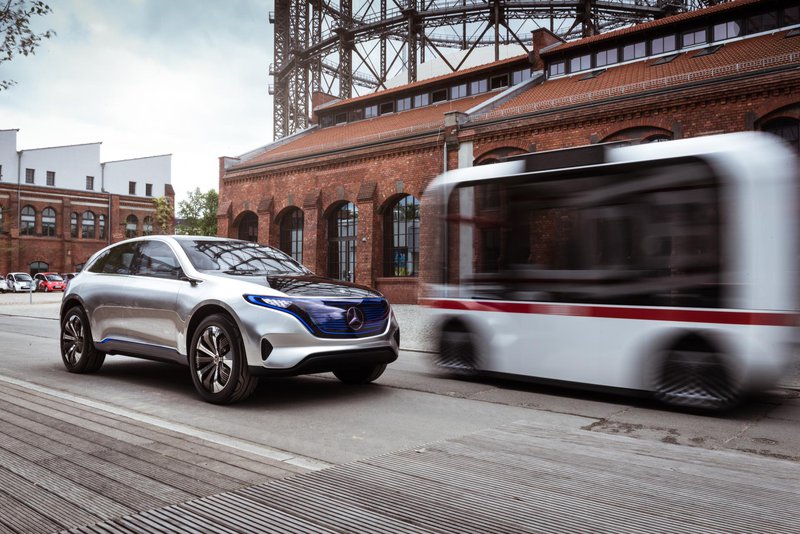
Gorden Wagener´s recipe for the electric vehicle range lies on simplicity, seaming less integration of shapes and profiles, both on the exterior and inside the car: "we have made a reinterpretation of our design philosophy of sensual clarity to create avant-garde, modern and independent DNA for our electro-aesthetics", the Daimler Chief Designer Officer tells us, before stating that the monolithic basic form of the EQC unites the genes of an SUV with the dynamic character of a coupé and a dash of shooting brake at the rear end". Featuring a completely new design language, the battery-electric models will have their own distinctive "electro-aesthetic" styling, including a new shape of radiator grille together with a new all-round light signature.
Sure we have to keep in mind that this is still the concept and that some of the solutions found here will not make it to production, but still it is worth noticing how the scarcely visible body panel joins, the concealed windscreen wipers, the use of cameras instead of exterior mirrors and an absence of conventional door handles emphasize the stretched silhouette, in a clear attempt to make the SUV appear as a unified whole while reducing its air resistance.
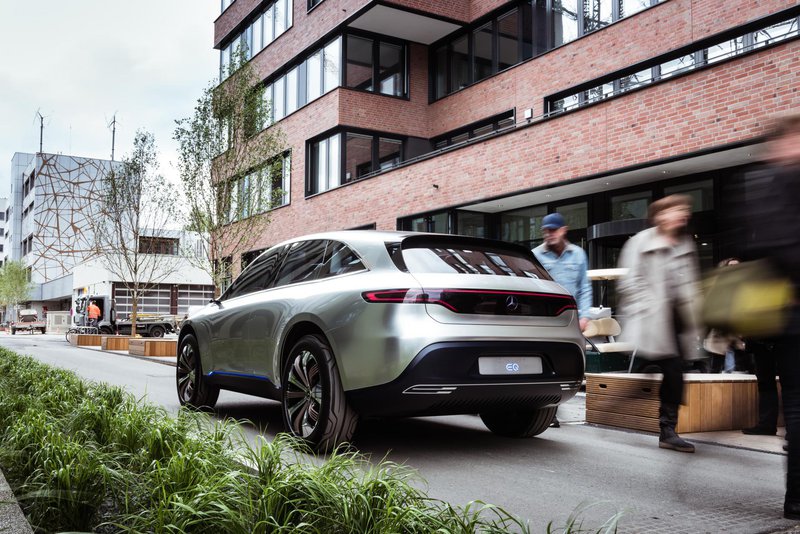
We jump inside, on the co-driver´s seat, to notice the transition from the black bonnet across the windscreen to the dark-tinted panoramic roof and at the same time feel jealous because the person sitting in our left (Joerg Weinhold, product manager of the EQC) gets all the attention from the driver-oriented cockpit dominated by touch-based controls with a new electro-look reflecting the exterior styling. The asymmetrical design of the instrument panel with its large, floating wide-screen display delivers the promise of an innovative, digital user experience.
Touch control on the steering wheel
Two of the three narrow spokes on the steering wheel are provided with touch controls, which are integrated into OLED displays (Organic Light Emitting Diode) indicating icons and symbols in the respective menus (the driver can swipe through the various menus and confirm their selection with a click).
The large 24-inch TFT high resolution display presents all relevant information, such as speed, range, driving data or navigation and map details. Whether there is a low information density with a very clean look to the display, or whether extra content is on view, is left to the driver's personal preference. Bordered in rose gold, the centre console creates a floating impression as it dispenses with mechanical controls (it is equipped with touch-sensitive elements). Instead of conventional exterior mirrors, cameras are used to project an image of the traffic behind onto integrated displays in the doors and both the door openers and the electric window lifters are touch-controlled.
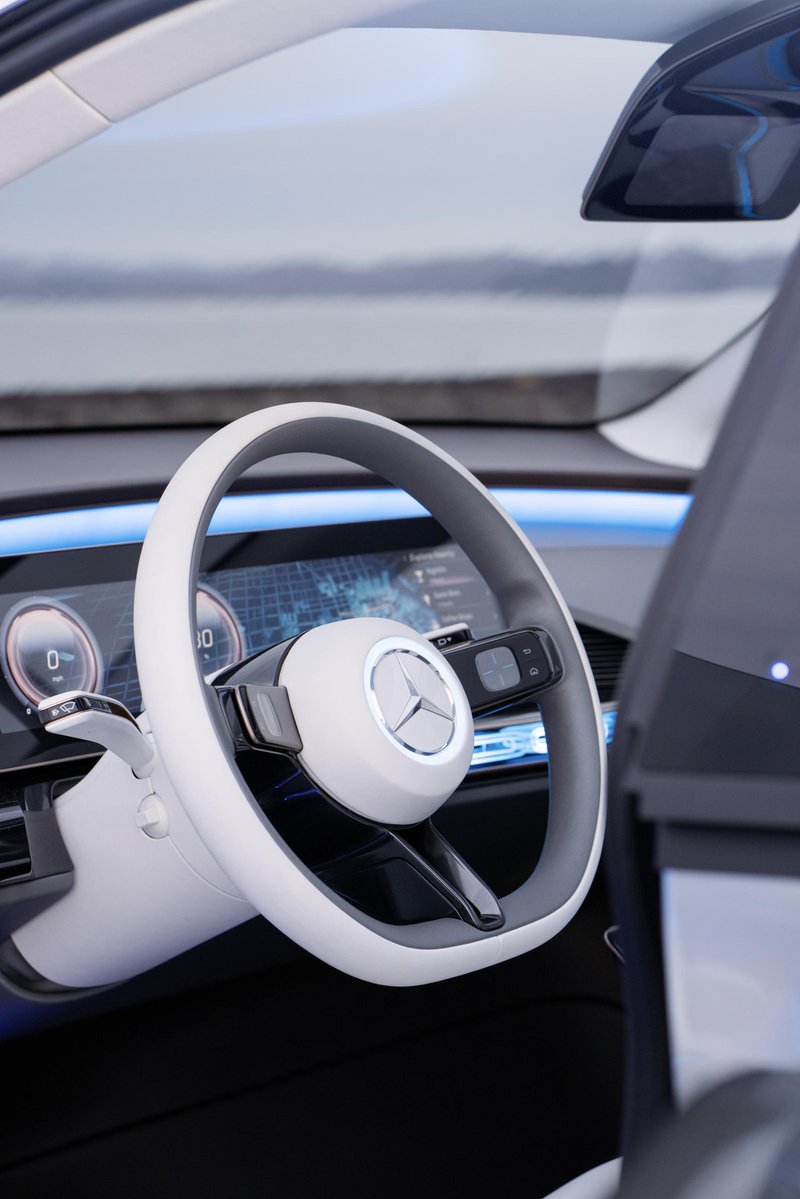
Will these futuristic features make it way to the series production SUV? In most cases, probably not, but one can expect the continuous and fully programmable wide display to be a standard feature. That will also be the case of the ambient light variation, as Vera Schmidt, from the interior design team, tells us: the dominant colours at every given time will also be a source of information to the driver, a way to let him know the vehicle´s overall condition". As there is a lot more information being provided to both driver and passengers the communication channels have to be diversified and also simplified. Makes sense as the future also takes place inside the life cell.
Room for five
Unlike the concept we co-drove, which offers accommodation for four people, the close to 4,70 meter EQC will provide room for 5 occupants and it be considerably roomier – more legroom, more headroom, more shoulder room – than the made for the show watts concept-car which is free from almost any practical concerns.
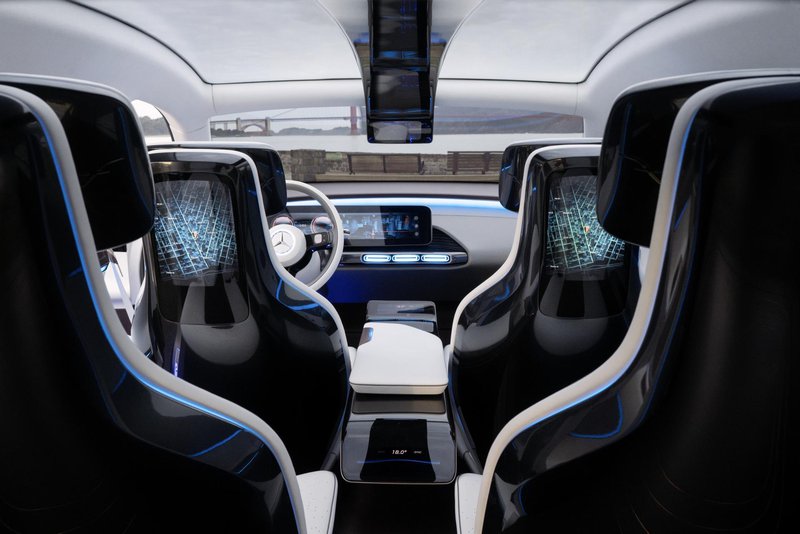
The EQC will probably be the first 100% electric SUV in the market with a 500 km driving range (courtesy of its lithium-ion battery with a capacity of over 70 kWh) and that does not have a Tesla badge in the hood. A sort of response from the orthodox car industry to what the daring company led by Elon Musk has come up with in the shape of Model X. And it needed to be as such as driving range anxiety will not be tolerated by the short term future EV driver. "The production car is powered by both axles and the motor power will go up to 300 kW and 700 Nm," Joerg Weinhold tells us while driving carefully this precious one and only EQ concept, despite the fact that it can potentially sprint to 100 km/h in under 5 seconds and go on to a top speed in the region of 200 km/h. Winter driving ranges limited to less than 100 km and cars that "hibernate" above 150 km/h are definitely a thing of the past in electric mobility. "Depending on the operating conditions, we can move the motors output between both axles as we want" explains Weinhold, from 100% to 0 in the rear or vice-versa. And the large battery pack placement between the two axles is especially beneficial for driving dynamics. Without getting into a lot of detail, our driver also assures us that in terms of charging options (wireless charging will be a must by the time the EQC gets to the market), driver´s assistance systems and autonomous driving features the EQC will be a reference. And that will also apologize for its price starting point which will be above 70 000 euro.
Mercedes-Benz EVs will be produced in four sites
Mercedes-Benz aims to have over ten all-electric vehicles in its portfolio by 2025 (when it expects EVs to reach a 15 to 25% share of its global sales). The new electric vehicles can be built within the existing global production network with sites on four continents. It will be based on an architecture specifically developed for battery-electric models, which in every respect will be scalable and applicable across the model range: the wheelbase and track width as well as all other system components, especially the batteries, are variable thanks to the modular building-block system. The vehicle concept is thus optimised to meet every requirement of a future-oriented, battery-electric model family. The basic architecture is suitable for SUVs, saloons, coupés, etc.
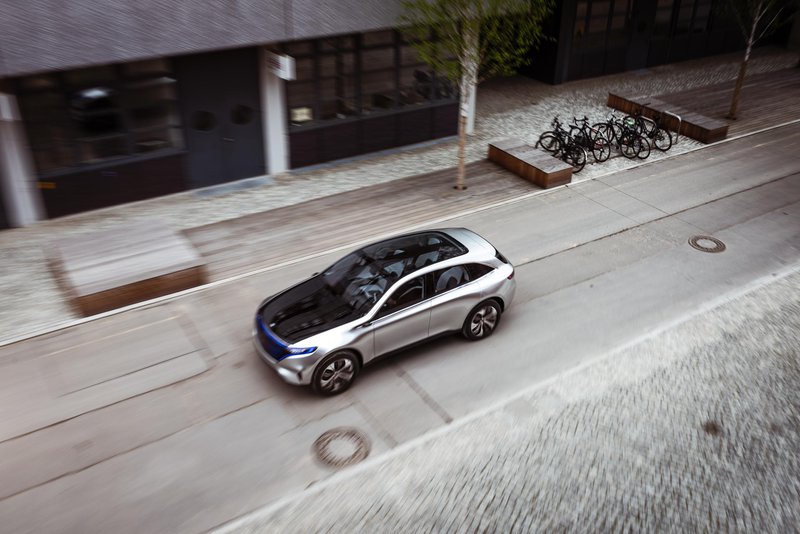
At which sites within the production network the EQ models will be produced is decided in relation to market demand.
The first production site to be announced was Bremen, currently dedicated to building ten different models (E Class, SLC, SL, C Class and GLC variants including their plug-in hybrid versions, as well as the GLC F-Cell which will start to roll out of the assembly line very soon). Then Sindelfingen has also joined the "EV cause" as it is transformed into the competence centre for large size and luxury EVs. On the other hand, Rastatt will build on its expertise to integrate combustion engine and EV production in the same premises as it has been the case since 2014 with the battery electric B Class and it will focus on compact EVs. And, finally, Hambach will keep on producing the electric versions of the smart Fortwo as it has been the case since 2007.
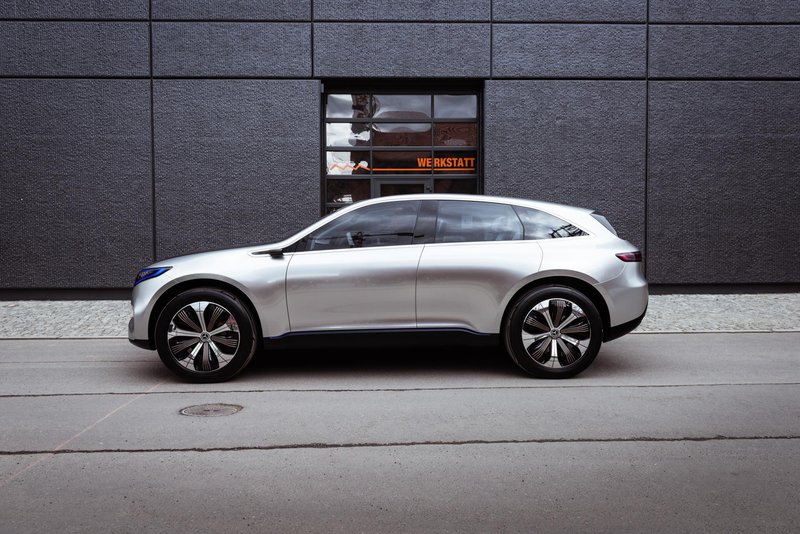
The battery for the new electric vehicle will be developed by the Daimler subsidiary Accumotive and produced in Kamenz (Saxony). The production has just been expanded with an investment of 500 million euros to make it possible Accumotive to produce lithium-ion batteries for all electrified vehicles of Mercedes-Benz and smart – including plug-in hybrids as well as fully electric vehicles.
The first electric Mercedes is 45 years old
The message was clear: "Mercedes-Benz – eco-friendly thanks to electric drive" was written on the side of the LE 306. The electrically powered light van celebrated its premiere 45 years ago on 13 and 14 March 1972 in Brussels, where it was unveiled to experts at the "Electric Vehicle Study Days" symposium of the International Union of Producers and Distributors of Electrical Energy UNIPEDE. In the summer of that same year, the LE 306 then came to the attention of the world public at the 1972 Olympic Games, at which a fleet of the experimental vehicles was in use. A short while later, there was even a large-scale trial with a total of 58 vehicles.

The LE 306 was powered by an externally excited DC shunt motor with 35 to 56 kW output. This, in turn, drew its energy from a battery weighing 860 kilograms with a voltage of 144 V and a capacity of 22 kilowatt-hours. This was enough to allow the light van with a payload of one tonne to be driven between 50 and 100 kilometres at speeds of up to 80 km/h.
To extend the range to a practical area of use, the engineers devised an exchange system for the energy storage unit: the "slide-through horizontal exchange technique" made it possible for the battery to be replaced in just a few minutes. "At the charging station, the discharged battery is pulled out from the side, while a new one is simultaneously slid in from the other side. It all takes no longer than a normal fuel stop," stated a Mercedes-Benz brochure on LE 306 from 1974.
During breaks in operation, the battery could also be charged with mains power while still in the vehicle. In addition, the motor acted as a generator during braking, the kinetic energy being converted to electric energy, which was then stored in the battery. The same efficient principle of energy recovery is used in present-day hybrid and electric vehicles.
Joaquim Oliveira/Press Inform
